Niche Indeed
Middletown (Google Maps location)
December 2023
CT museum visit #514.
I might be the first person to ever drive to the out-of-the-way Middlesex Community College campus for the sole purpose of seeing its two tiny art galleries who is not a close friend or relative of an exhibited artist. Hooray for me?
For us all?
I always had it in my mind that MxCC was somewhere near downtown Middletown. I had no idea it was quite a ways outside of downtown way out east towards the reservoirs and the Connecticut River. The campus is tiny and consists of four buildings. But community colleges are vitally important and Connecticut has a fairly robust network of them, now all combined under one Connecticut State Community College.
It’s a good move by the state.

Heck, Middlesex technically has a few campuses beyond the main one; at a high school in Meriden and a roving home down in Old Saybrook. They offer online programs as well. But enough about that, we’re here for the art! First stop: The Pegasus Gallery.
Security is tight here. I entered Chapman Hall and was immediately stopped by a doddering retiree dressed up like a security guard. Oh, wait, he is a security guard. Oof.
I stated my business. “I’d like to check out the Pegasus Art Gallery.”
What followed was about 15 minutes of who-knows-what. I turned over my driver’s license. He made a copy. He filled out some information on his computer.
One.
Key.
At.
A.
Time.
The effort it took to take my picture on a circa 2002 camera and then print it via dot matrix or some such felt like something out of a David Lynch movie. My man got a grainy black and white picture of my torso, despite his best efforts. Think I’m exaggerating?
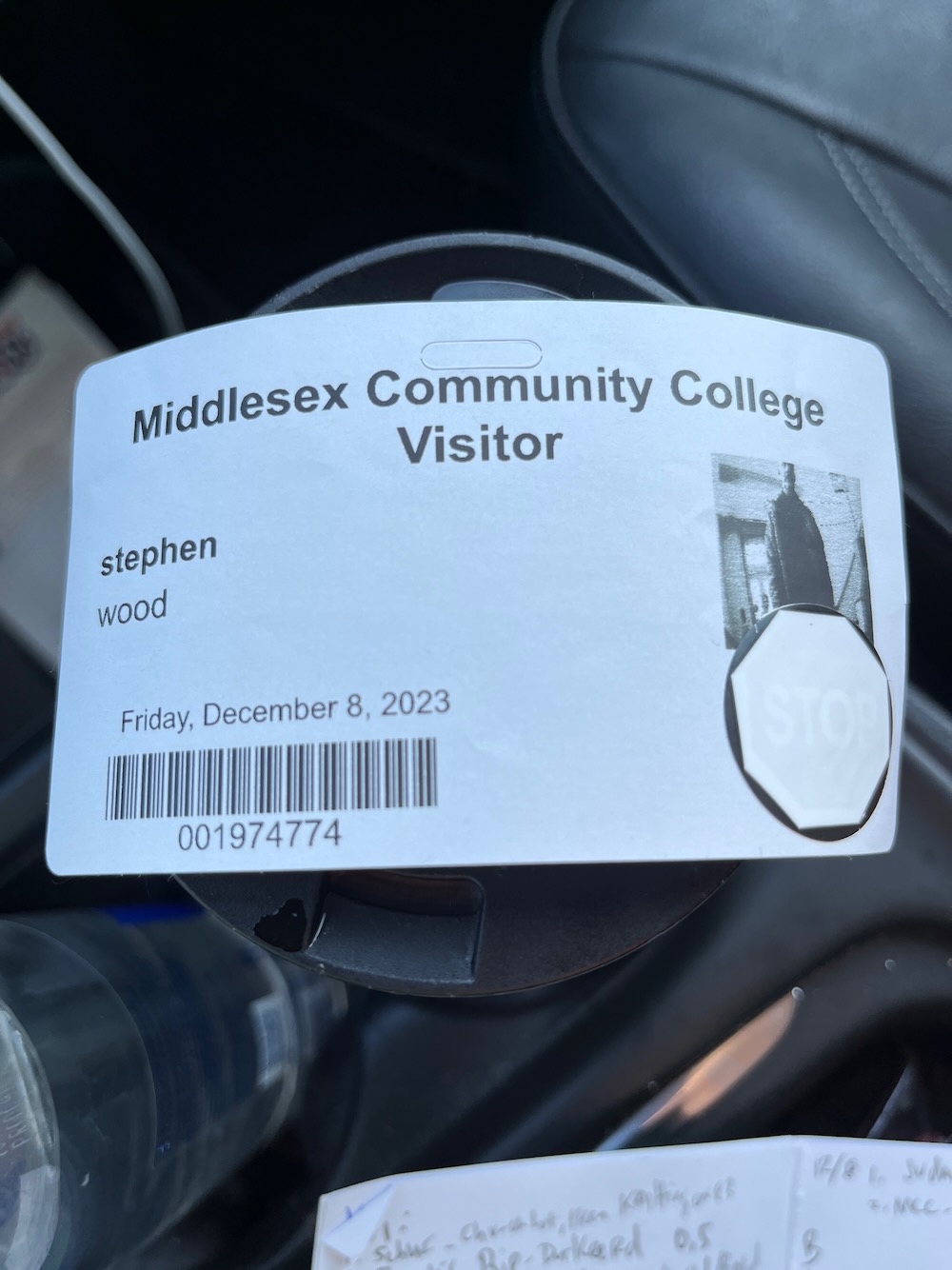
I’m not exaggerating.
Other people with proper ID’s were being held up because the computer used to produce my awesome visitor’s pass is the same one used to scan employees and students, and I learned that it cannot handle those two separate functions at once.
Once sorted, I was asked if I knew where the library was. Mind you, the library entrance was directly in front of me with a giant “LIBRARY” sign. I assured the gentleman I knew where the library was, as I’d been staring at it for what felt like an eternity.
Free from The Man, I sauntered into the Pegasus Gallery like I owned the joint.
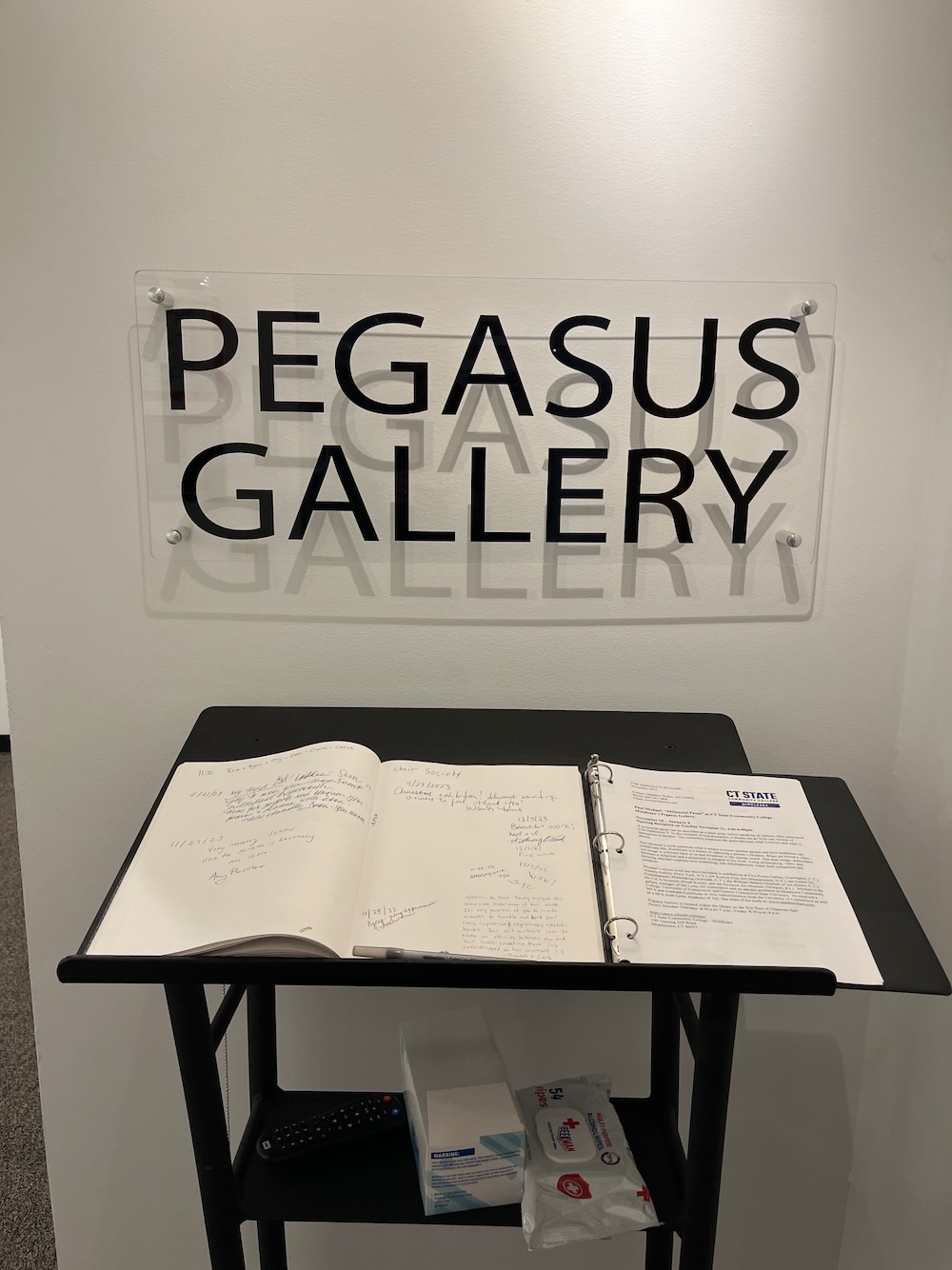
The gallery was renovated and “re-opened” in 2012. It exists to house exhibits by professional artists as well as artwork by MxCC students and faculty.
“We have such a vibrant arts department at MxCC, we needed space to do it justice,” Wasescha said. “This newly redesigned exhibit space will allow us to greatly expand the types of art we can display, and brings so much more to our campus. It is a place for inspiration and thought, as well as a place for gathering and socializing. This is an exciting step for our campus.”
Cool.
The gallery is tiny. But it’s an art gallery and here I was. The exhibit on display in December 2023 was called “Millennial Pause” by artist Paul Michael. A millennial pause can be described as a short delay before speaking on camera, often associated with Generation Y. In this moment of transformation, a person can go from one version of themselves to another. This exhibition examines the space between what is known and what is shown.
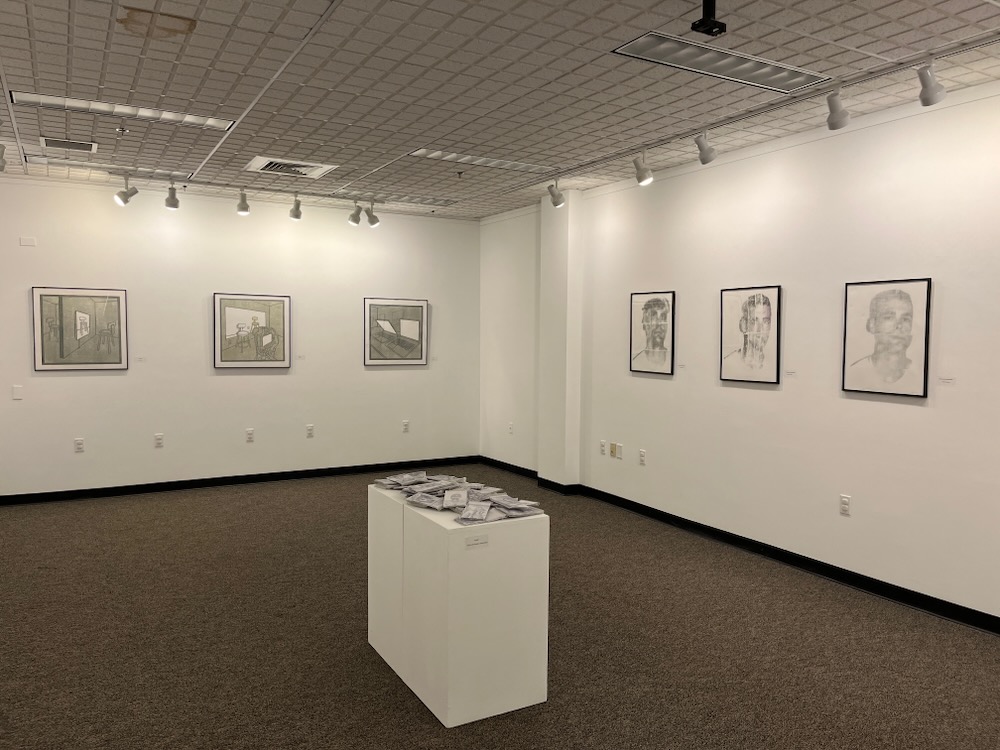
I clearly didn’t write that explanation because I have no idea what that means.
Paul Michael’s work questions what it means to know another person and how mediation can complicate this. Portraiture is a means of capturing a person’s likeness. When we record a video, our image is reflected back to us and broadcast to the outside world. This dual image, somewhere between a reflection and a projection is integral to his work. Using printmaking, video, and drawing, Michael explores how technology can simultaneously foster both connection and isolation.
Michael is a prolific artist and is the gallery manager of the Lyme Art Association and an adjunct professor at Middlesex, the University of Connecticut, and Eastern Connecticut State University.
His work was sparse, yet evocative.
Did that sound good? I thought so. I liked the one with the chairs.
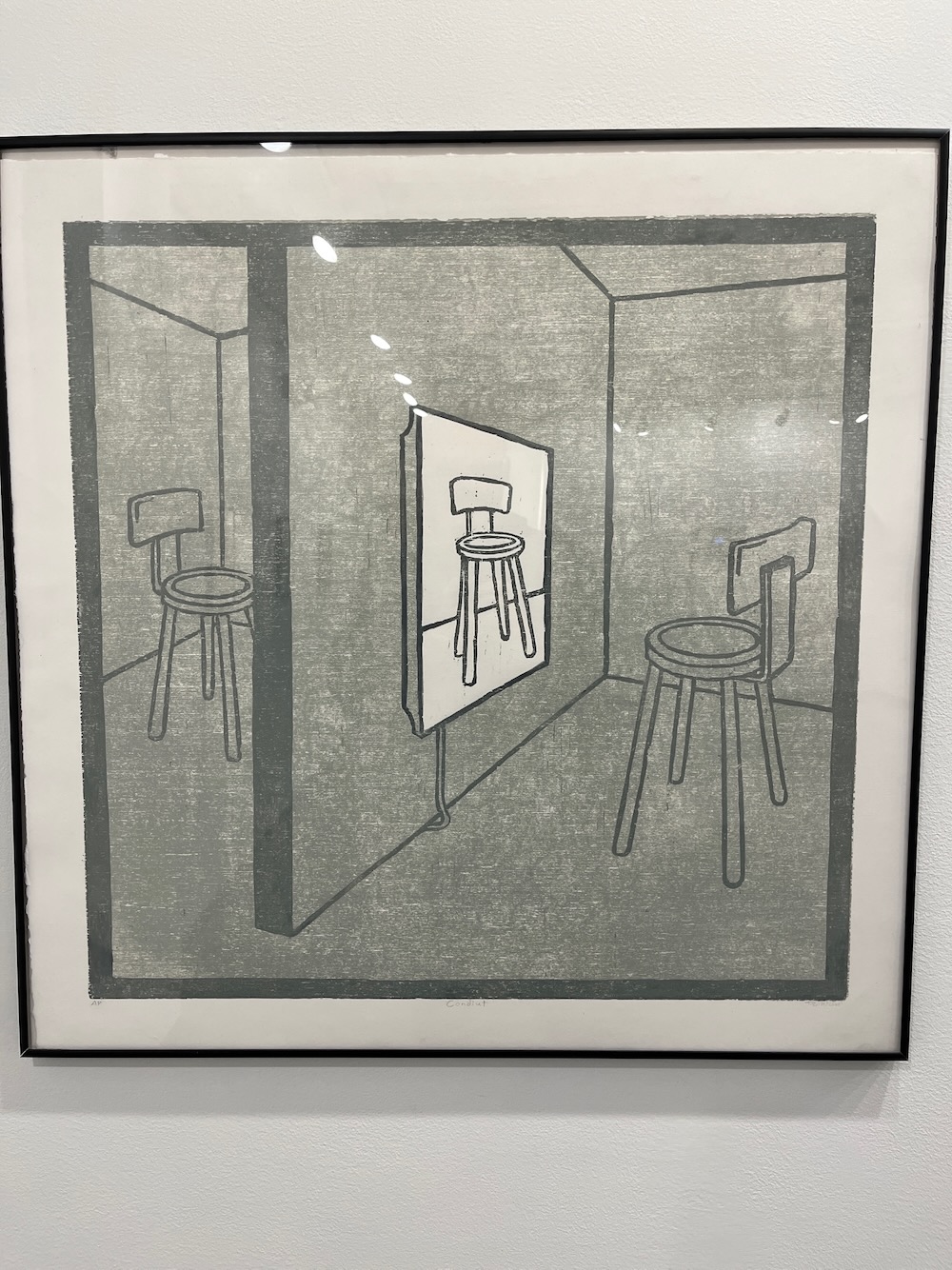
I spent a fraction of the time in the gallery that spent trying to get into it. I took one more quick spin around the space and left. The security guy wanted to check me out but I pretended I didn’t hear him and just pushed my way through the doors out into the brisk sunshine. There was no way that dude was going to make any sort of physical effort to chase me down… for what? I don’t know.
I walked across to Founders Hall to check out the Niche Gallery. Which I’m renaming the Niche “Gallery.”
I was approached by a much younger and spry security guard here. I said, “I just got my visitor pass across the way. I’m only here to look at this display case.”
I braced for another round of surreal absurdity, but the guy simply said, “Go ahead” and went back to whatever he was doing. Phew.
The Niche “Gallery” is what I said it is. A display case. The exhibit was “Crafts From Japan;” traditional wood and paper toys from Japan.
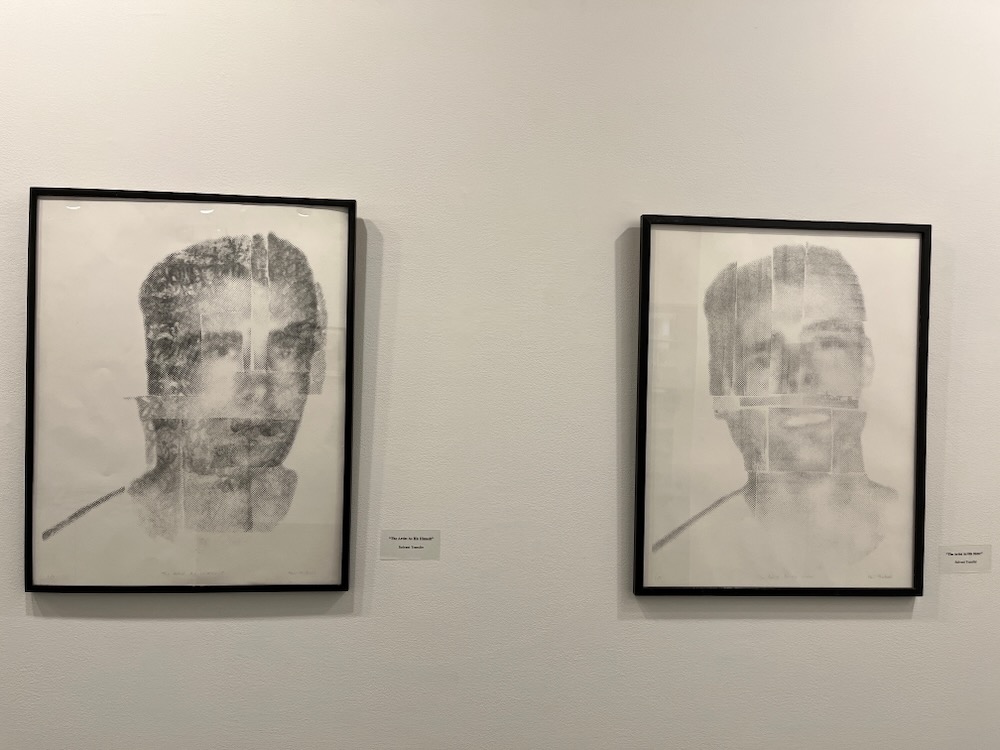
This exhibition features traditional crafts of Japan. While most of the objects on view were made in the postwar period, they show the vibrant designs and exceptional craftsmanship practiced by Japanese artisans for centuries. Many of the objects are toys or household items, which can be endowed with supernatural powers of protection and serve as good luck charms. Among the featured crafts are woodturning, wood carving, woodblock prints, painting, paper constructions, papier mâché, lacquerware, ceramics, and various textile arts.
Cool.
Wait. What? “Many of the objects are toys or household items, which can be endowed with supernatural powers of protection?” That’s it? That’s a fact?
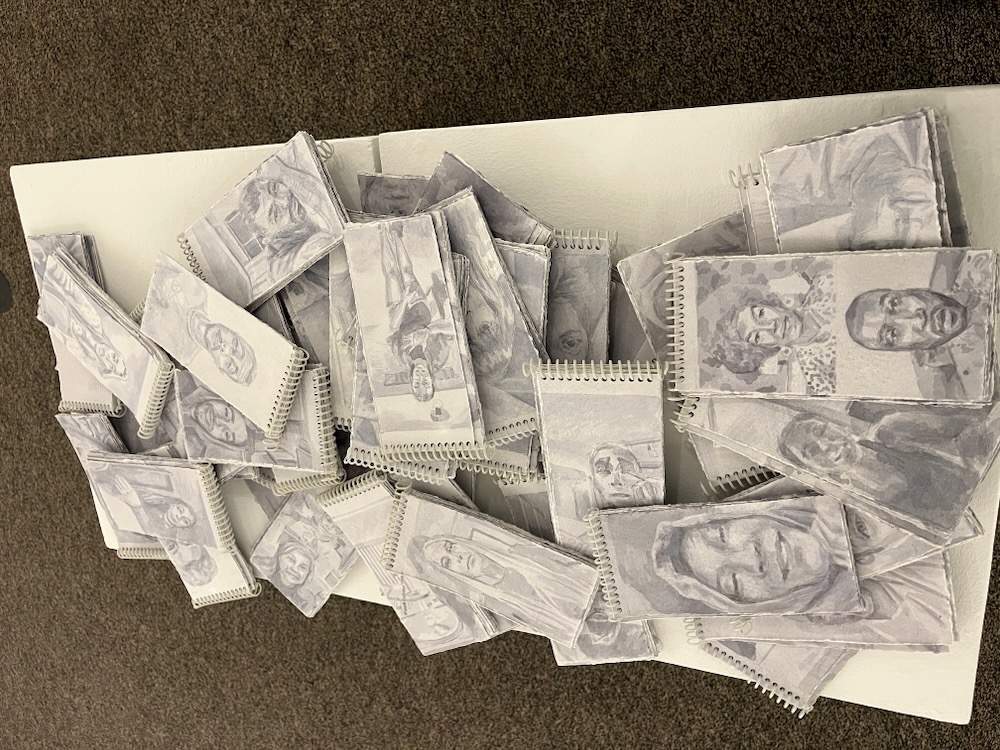
The funny thing is there is an attendant 1,300 word essay about all this stuff and it never again mentions that these are magic toys. Japan is a mysterious land.
I really liked this little exhibit. The bright colors and simplicity of the toys harkened back to a more innocent time. A time of Godzilla and Mothra.
Let’s learn some Japanese: “Kokeshi” are simple dolls made of a cylindrical body and a round head. In this collection we see kimonos with painted or incised floral patterns, seasonal landscapes with mountains and snow-laden branches, and patterned red paper.
“Yawata-uma” (Toy Horses) come from a region in northern Japan called Hachinohe. The brightly painted horses are crafted as souvenirs for a festival at a local shrine. The horses are associated with weddings and may be given as a gift of good luck.
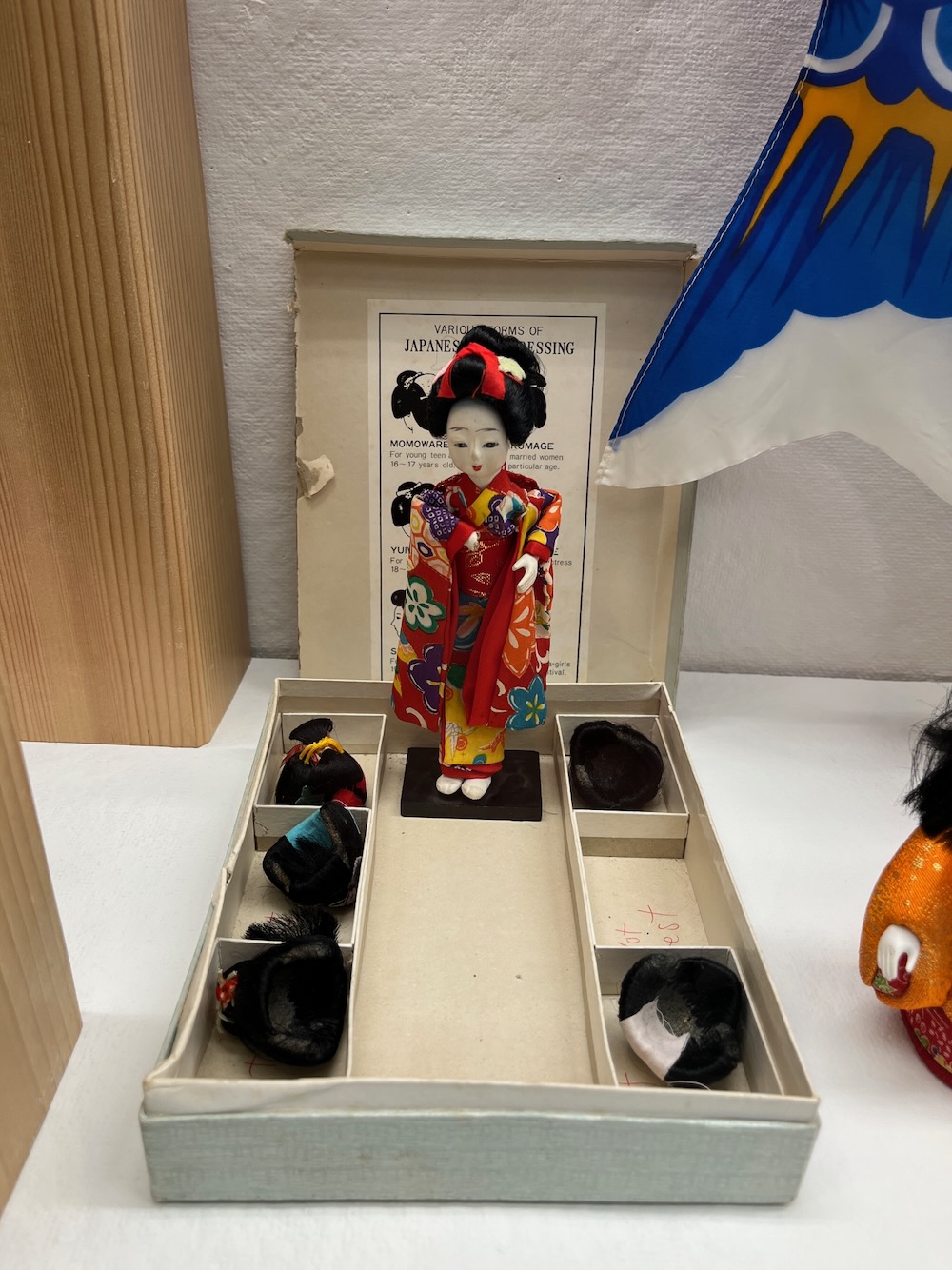
“Daruma” have their origin in Zen Buddhism. They are meant to represent Bodhidharma, a Buddhist monk. Frequently, the daruma figures are made of papier mâché and have a rounded or roly-poly bottom. The ability to stand back up after being pushed is a symbol of perseverance or determination, and for this reason daruma are often given as gifts of encouragement.
“Inuhariko” are papier-mâché dogs which are used as amulets to ward off bad spirits and protect the home. “Hariko” is a term that refers to paper craft in Japanese. Oh, okay, I guess there’s your magic.
“Kimekomi” dolls feature beautiful silk fabrics in their costumes. The name refers to the technique of cutting narrow grooves into the surface of the body so that the edges of fabrics can be tucked into place in ne
I think that’s enough. There is a bit about Children’s Day (Kodomo no Hi) which is a huge national holiday in Japan and other Asian countries. (It was a big deal when I worked at LEGO; lots of promotions for the Asian market.)
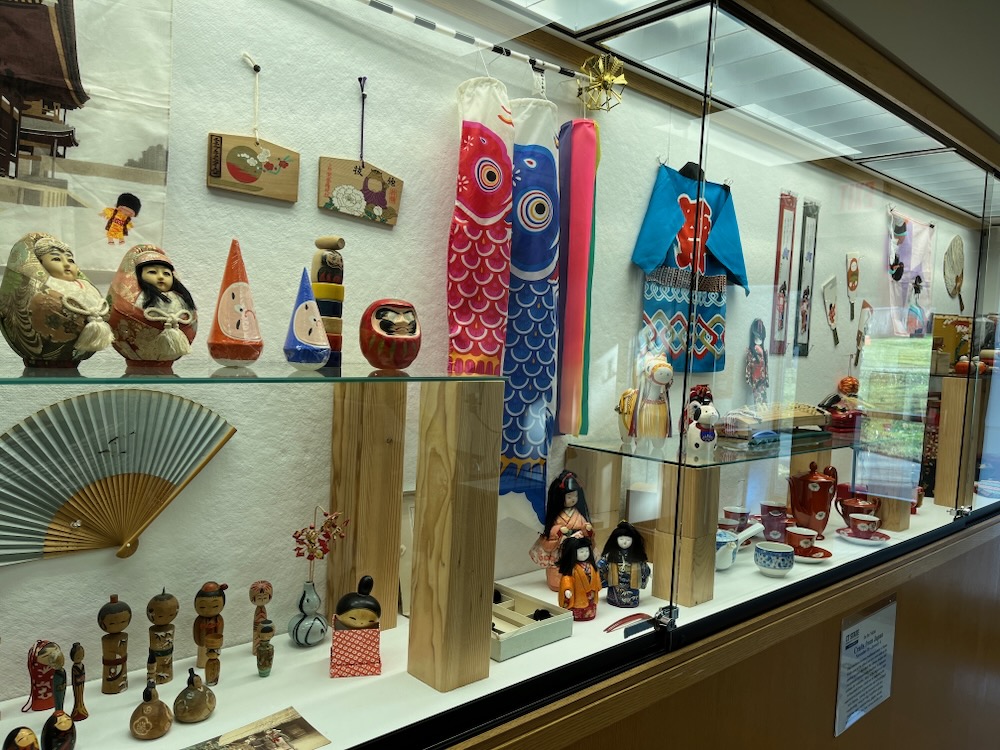
There were lacquered bowls and hacky-sack like toys here. A rather comprehensive collection in a rather small space. Perhaps one of my favorite traditional arts/toys of Japan is their paper arts. You’re all familiar with origami of course, but there’s much more than paper swans and throwing stars. (My brother and his family have lived in Japan for several years, and one of my two cousins has been there for decades, so I get a little lesson from my niece there from time to time.)
“Washi” is a traditional paper made from the fibers of the bark of shrubs native to Japan which is prized for its purity and durability. It is used in the arts of calligraphy, origami, and woodblock printing, and has many other household uses. Paper dolls and decorative boxes made with origami paper were on display. As cool as the folding techniques are, the decorative “shimmer” used on paper koi and dragonflies is just the coolest thing.
And there you have it. The art galleries of Middlesex Community College of Connecticut State Community College in Middletown, Connecticut.
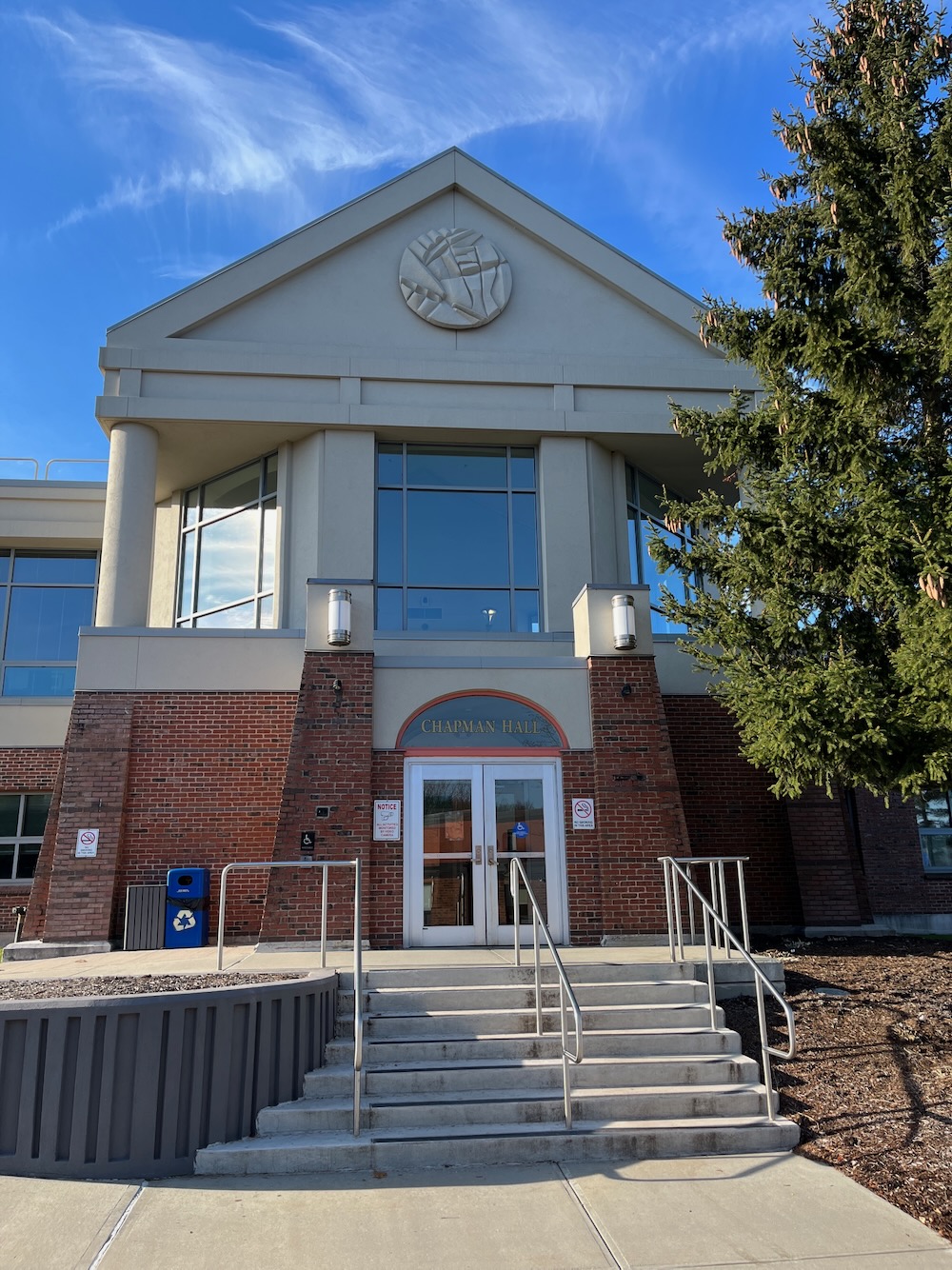
![]()
Pegasus and Niche Galleries at MxCC
CTMQ’s Museum Visits

Leave a Reply